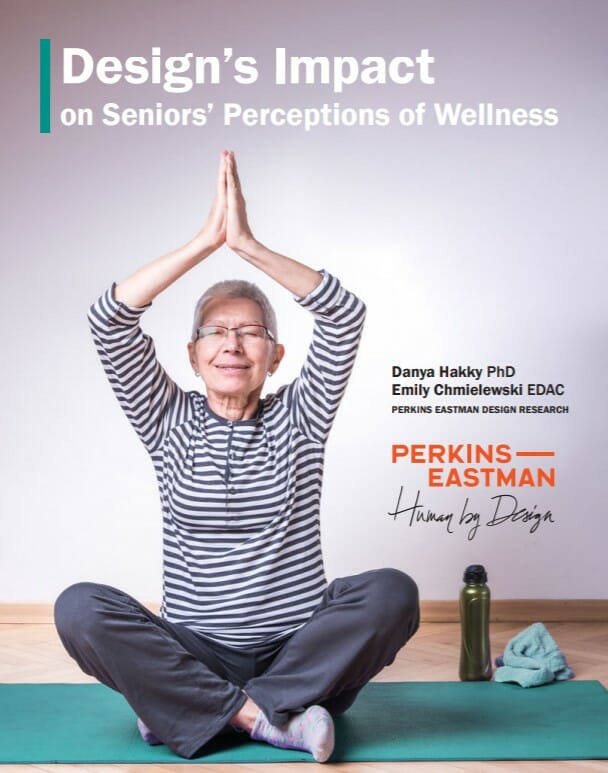
Supporting “whole-person wellness” in senior living through strategic design is integral to supporting the well-being of residents, according to a new study.

“Design’s Impact on Seniors’ Perceptions of Wellness” from New York-based architecture firm Perkins Eastman, evaluated the responses of 540 older adults living in three West Coast senior living communities to determine how they viewed their own physical, social / emotional and intellectual wellness.
The study, which began years before the impact of COVID-19 on the senior living sector, included insight from residents living at three life plan communities, also known as continuing care retirement communities: MonteCedro in Altadena, CA; Spring Lake Village in Santa Rosa, CA; and Rockwood Retirement Communities in Spokane, WA.
Perkins Eastman said it selected these three communities due to their focus on whole-person wellness and specific design strategies to support that objective.
Residents completed questionnaires between 2015 and 2017 at certain points of pre-construction, post-construction and occupancy. The study focused on the following wellness strategies used by designers: autonomy, control and choice; design in variety; promotion of use through location and access; patterns of movement; natural connections; touch of serendipity; degrees of privacy; layers of light; sensory experiences; and feelings of home.
According to the results, more than 90% of respondents said that design strategies used in their communities were integral to their well-being. Overall, the study found, residents’ perceptions of wellness positively increased or held steady after they began using new or renovated spaces in their communities.
Aspects that showed the most improvement in physical wellness in all communities included access to physical wellness resources and exercising regularly.
In terms of social/emotional wellness, access to resources, a good support system and a sense of connection and belonging improved across all three communities.
Access to intellectual wellness resources were perceived as better, as well as opportunities for residents to expand their knowledge and explore the creative arts.
“Through this study, we found that both senior living providers and designers are interested in supporting resident whole-person wellness, and that there is a belief that the environment can have a positive impact on the building occupants,” the authors wrote. “We saw that supporting wellness is more than just providing spaces for various programmatic elements and activities, but that it’s also important to employ strategic design decisions that support whole-person wellness.”
The design strategies in the study should be viewed as a “starting point” for designers and providers to expand on, while developing more strategies and approaches to support “whole-person wellness,” the author stated.
“What we learned in this pre-pandemic study, and what we are learning now (in the months and years to come) about how senior living communities help residents and staff to remain physically, socially and emotionally well, will influence how we understand the impact of design moving forward,” they wrote.




